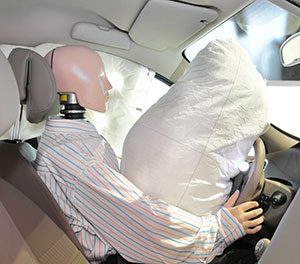
Auto accidents occur on a daily basis throughout Marietta, Kennesaw, Woodstock, Smyrna, and other metro-Atlanta cities. In an effort to keep passengers safe when involved in auto accidents, the National Highway Traffic Safety Administration conducts safety assessments on new vehicles to determine how well they would protect passengers in a crash. These tests also aid in determining if automobiles will resist rollovers and whether they contain technology that could help deter accidents altogether. These safety ratings are often discussed by car salesmen when attempting to make a sale to consumers. The ratings for a vehicle can range from one star to five stars. One star indicates the lowest safety rating while five is the maximum. While this method cannot determine exactly how safe passengers will be during an accident, it does allow consumers to compare the safety of one vehicle to others. Understanding the tests that make up the 5-Star Safety Ratings is important before consumers can truly understand how safe their vehicles are.
In 2011, the 5-Star Safety Ratings procedures changed to be more strenuous than they were previously. There are now three independent crash tests and one rollover resistance test on automobiles, scored in the end by the 5-Star system.
The first Frontal Crash Test is comprised of an adult male dummy of average size in the driver’s seat. The second involves an adult female dummy that is small in size as the passenger. The Frontal Crash Test inspects the safety of the vehicle if involved in a head-on collision. By collecting data from the head, neck, chest, and legs, and determining the seriousness of injuries sustained, the overall safety of the automobile in head-on collisions can be determined.
There are also two Side Barrier Crash Tests, including the same dummy genders, sizes, and ages as above: two adults, one average-sized male and one small female. The adult male dummy is in the driver’s seat, while the small female dummy is moved to the rear as a passenger. This Side Barrier Crash inspects the safety of the automobile if another vehicle crashes into it on the driver’s side. Data is collected from the head, chest, abdomen, and pelvis for the adult male dummy. The adult female’s body has data collected from the head and pelvis only.
The third and final independent crash test is the Side Pole Crash Test, which includes only an adult female dummy that is small in size, located in the driver’s seat. Again, this test aids in determining the safety of the vehicle when impacted on the driver’s side, but instead of another vehicle being the impact, it is a pole. By collecting data from the head and pelvis, the overall safety of the vehicle in side pole crashes can be determined.
Finally, the Rollover Resistance Test rounds out the assessments used in the 5-Star Safety Ratings system. This test is to determine the safety of an SUV or other vehicle in a single-vehicle, loss-of-control scenario. This assessment tests how well an automobile will resist rolling over while involved in turning maneuvers. Because rollovers are such a large part of crashes and fatalities in single-car accidents, this test is extremely important.
Each of these tests is important in measuring the crash worthiness and safety from rollover of automobiles on Atlanta roads today. It is important to understand a vehicle’s safety features before making a purchase because it could be the difference in life and death. Many newer models not only exceed in the rating system, but include additional safety features that deter from accidents. Before purchasing an automobile, whether new or used, make sure you know its 5-Star Safety Rating and understand what it means. Regardless of fault, if you are involved in a car accident in or around Marietta, safety will be the most important thing on your mind. If you or someone you know were injured as a result of these safety features not working properly during an accident, you may have a Georgia auto defect clam. Contact our firm today for more information and a free initial consultation.










